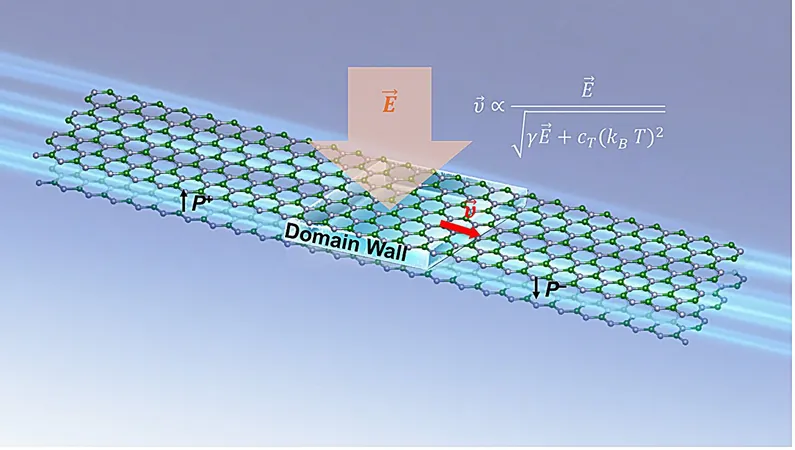
Unlocking the Secrets of Sliding Ferroelectrics: New Wave-Like Mechanism Discovered!
2025-08-11
Author: Yu
Revolutionizing Nanoscale Electronics
Sliding ferroelectrics, a cutting-edge class of two-dimensional materials, are gaining momentum in the world of advanced technology. These materials are created by stacking nonpolar monolayers, each a mere atom thick, to produce ferroelectric structures with intrinsic polarization—where positive and negative charges naturally separate. This polarization can be manipulated using an external electric field, offering intriguing possibilities for next-gen electronics and quantum tech.
A Groundbreaking Discovery
A team of researchers from Westlake University and the University of Electronic Science and Technology of China has made an exciting breakthrough. Their recent study, published in *Physical Review Letters*, reveals that the switching of polarization in sliding ferroelectrics is driven not by uniform shifts of entire layers but by dynamic wave-like movements of domain walls—boundaries separating regions with different polarizations. This shifts our understanding significantly from previous assumptions.
Solving a Complex Puzzle
The research spearheaded by Shi Liu aims to answer a pressing question in the field: How can an out-of-plane electric field switch polarization in sliding ferroelectrics, given that the polarization results from in-plane atomic movements? Liu and his team explored this conundrum and identified that many previous studies were overly simplistic, mistakenly assuming collective shifts of entire monolayers.
Innovative Simulation Techniques
To investigate these mechanisms, the researchers utilized advanced molecular dynamics (MD) simulations, a powerful computational technique that mimics atomic movements over time. They introduced a deep integral model known as the deep potential (DP) model, which accurately simulates the complex atomic interactions essential for understanding polarization dynamics.
New Insights into Polarization Switching
The findings are groundbreaking: the out-of-plane electric field alone cannot reverse polarization within a single domain of sliding ferroelectrics. Instead, polarization switching occurs through domain walls, showcasing a novel temperature-related behavior. Surprisingly, the team observed that domain wall motion increases as temperatures drop—a reversal of traditional expectations in ferroelectrics. This phenomenon has been labeled ‘superlubric domain wall motion,’ drawing parallels to frictionless systems.
Future of Sliding Ferroelectrics
This transformative study opens new avenues for research on sliding ferroelectrics, with implications for developing advanced technologies that leverage these materials in nanoscale devices, even in cryogenic environments. Liu envisions future studies that will delve into how quantum effects impact structural dynamics at low temperatures, potentially unveiling new physical phenomena and switching behaviors.
As we stand on the brink of a technological revolution spurred by sliding ferroelectrics, the possibilities seem limitless!

 Brasil (PT)
Brasil (PT)
 Canada (EN)
Canada (EN)
 Chile (ES)
Chile (ES)
 Česko (CS)
Česko (CS)
 대한민국 (KO)
대한민국 (KO)
 España (ES)
España (ES)
 France (FR)
France (FR)
 Hong Kong (EN)
Hong Kong (EN)
 Italia (IT)
Italia (IT)
 日本 (JA)
日本 (JA)
 Magyarország (HU)
Magyarország (HU)
 Norge (NO)
Norge (NO)
 Polska (PL)
Polska (PL)
 Schweiz (DE)
Schweiz (DE)
 Singapore (EN)
Singapore (EN)
 Sverige (SV)
Sverige (SV)
 Suomi (FI)
Suomi (FI)
 Türkiye (TR)
Türkiye (TR)
 الإمارات العربية المتحدة (AR)
الإمارات العربية المتحدة (AR)